Welcome to a Fresh Ubuntu Install
Abstract
You are ready to start using Ubuntu, but you don’t know what configurations are needed. Since this is new install you are not sure what needs to be done so you can use your system. Today we are going to review what needs to be done to a fresh install. This is picking where the install fest in January 2010 left off.
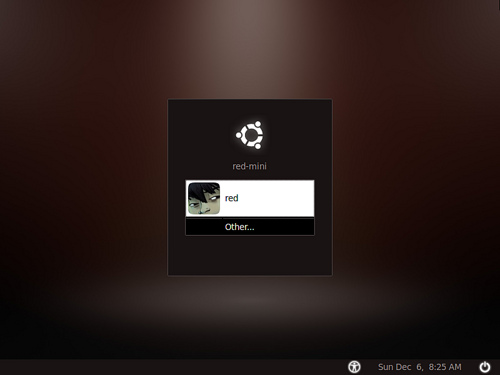
1. Welcome to Ubuntu
The install went just like clock work. Next you took the computer home, hooked it up to your keyboard, mouse, monitor, and network connect. Your turned on the power and find your self looking at a login screen.
So First thing you need to do is login with the same login you used during the installation. It is important to keep track of the login since it is your key to using the system. Although it is possible to reset a password, it is not simple.
Before we do anything on our new system we need to check if we have a working network connection. The easiest was to accomplish this is to click on the networking icon in the upper left of the screen.
NetworkManager Applet Location 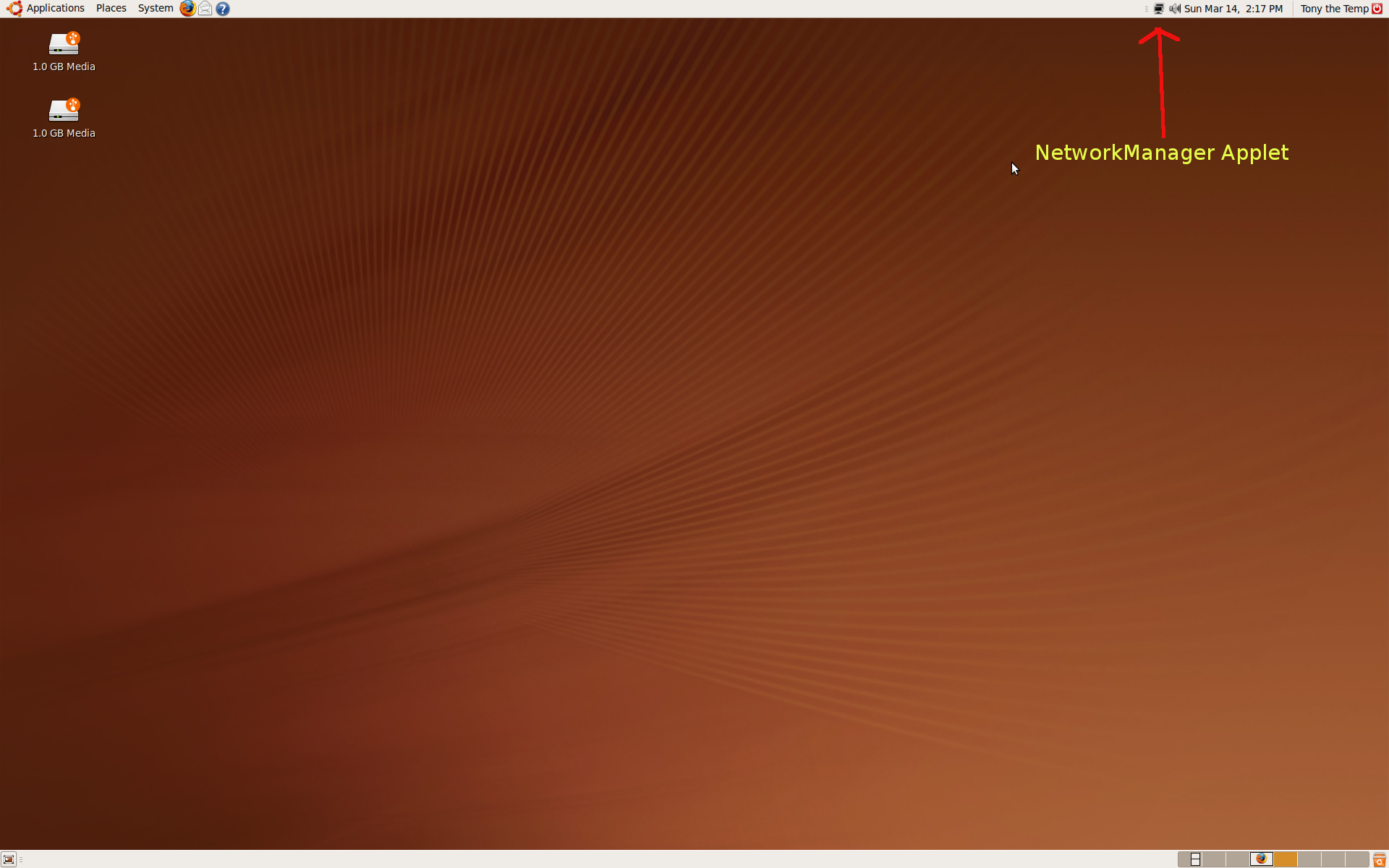
If you right click on the icon and select Connection Information you can view the current configuration information. It will probably look something like this:
Active Network Connection 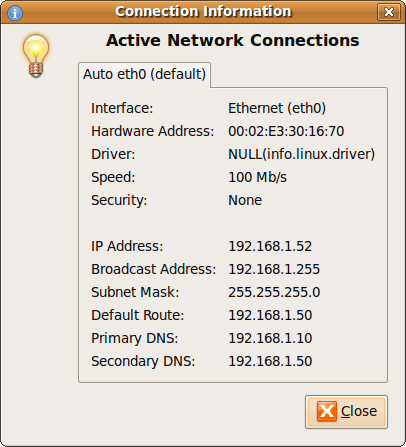
If you need to configure a Modem to connect your computer to you ISP (Internet Service Provider) I would recommend you follow the instructions for a Dialup Connection .
Now that the networking is working you see a minimized application you did not start. What is that doing there? You click on it and discover it is the Update Manager
Update Manager 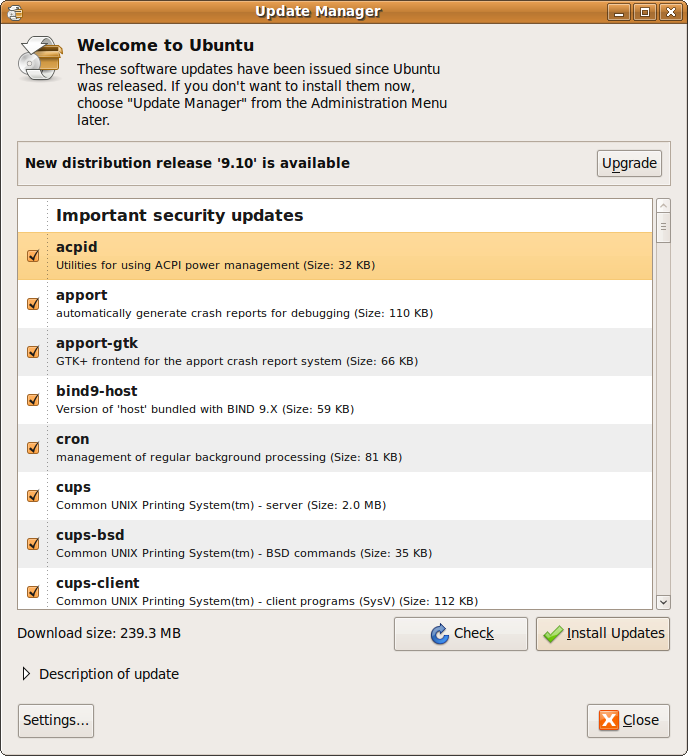
Now your update manager might look slightly different since this is the one from 9.04, but they are similar. This application starts automatically when updates are available. Since you just did an install it is a good time to do the update.
Click on the button Install Updates and you will be prompted for your password. This is typical when running any application which will require modifications to the system. You will be asked to input your password so the application can run with Super User privileges. Enter your password in the window and click Authenticate.
Authenticate 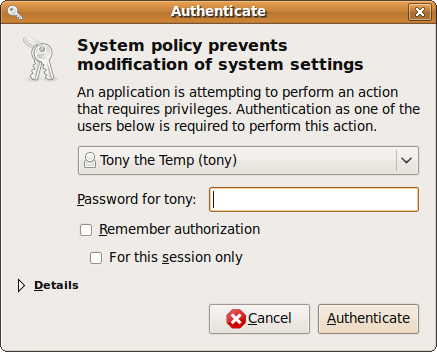
Allow the Update manager to finish it’s run to bring your new system up to date. This operation is not needed often but should be performed regularly to keep your system stable.
2. Customizations
Here are some suggested configurations you might use on your system.
2.1. Workspace Switcher
Lets assume you have logged in and are now looking at the main screen. I often start by right clicking on the Workspace Switcher pointed to by the arrow below.
Workspace Switcher 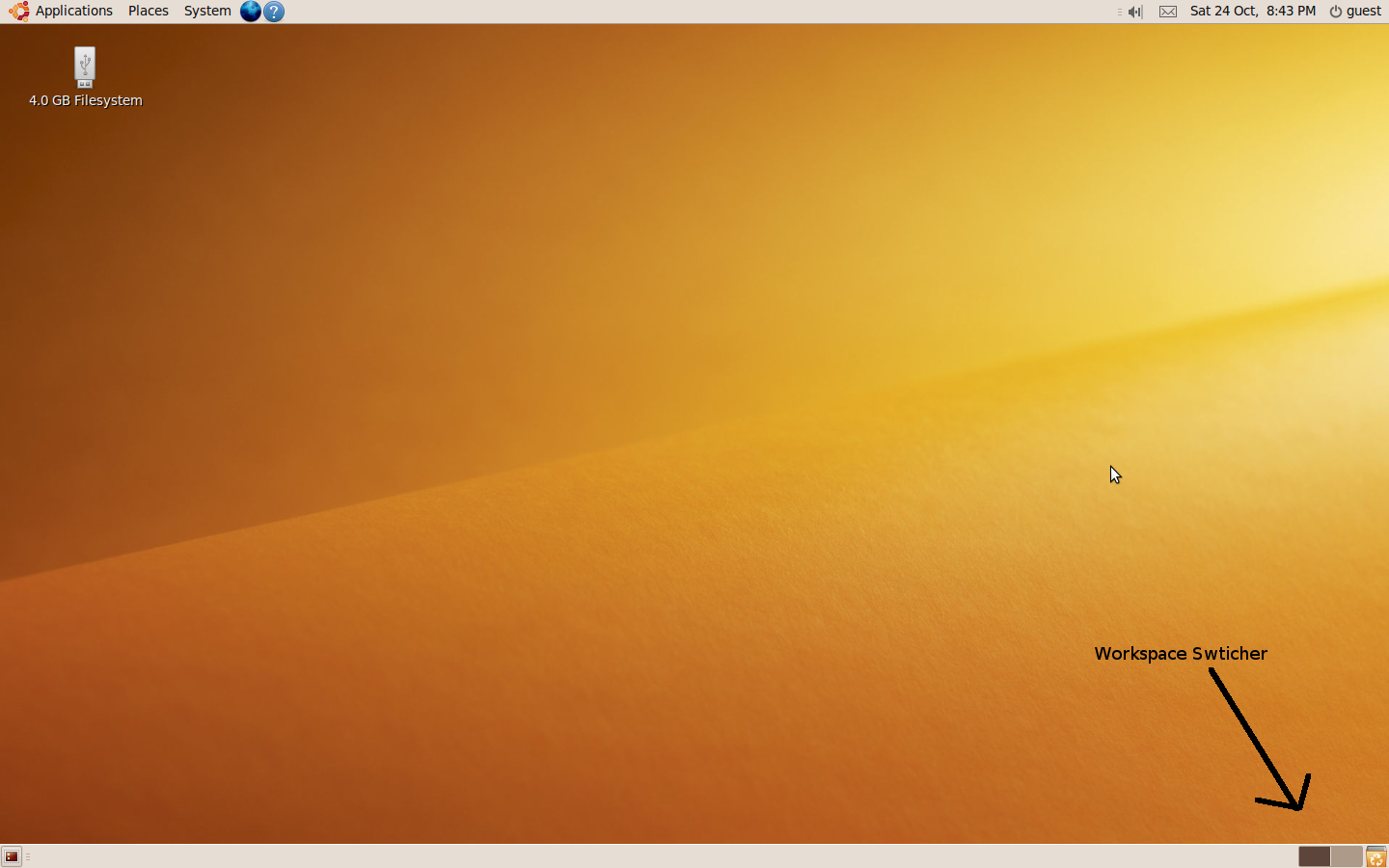
In the popup menu select preferences. This will open a windows for changes. Typically I set the Number of workspaces to 8 instead of the default 2. The reason is that this gives me more places to start programs. Unlike windows, which has a single workspace, Linux can have many workspaces and you can switch between them. You can make this change at any time if you are not comfortable with multiple workspaces.
2.2. Evolution with Gmail
Many people have email accounts on Gmail these days. So it might be useful to setup the Evolution mail program to use the Gmail server. Here is a link to help you with Using Gmail with Evolution .
2.3. Ubuntu Documentation
One web site you should become familiar with is the Community Help page for Ubuntu. There is a great deal of information there on how to accomplish most things in Ubuntu
Not to be overlooked is the regular Ubuntu Help for 9.10 which is created and maintained by Ubuntu.
Another source of documentation on the Linux Desktop is from GNOME Documentation Library . These document are written about gnome, but that is the default window manager in Ubuntu.
2.4. Mouse Trick
One option I have not found much documentation on in Linux is copy pasting. If you have a scroll wheel on your mouse, you also have a three button mouse. The scroll wheel is infact a button as well as a mouse. So to copy text from one place to another, simply high light the text with the left mouse button. Then go to the location you want the text and press the scroll wheel. This will copy the text from the high lighted location to the target location.
If you do not want to do this with the scroll wheel, you can high light the text in the same manner and then right click the text, select copy from the popup menu. Now go to the location you want to paste the text and again right click the mouse, and select paste from the popup menu.
For more information on this function, have a look at How do I copy-paste? .
Written by John F. Moore
Last Revised: Tue 01 Sep 2020 08:10:12 PM EDT

This work is licensed under a Creative Commons Attribution-NonCommercial-ShareAlike 3.0 Unported License.
